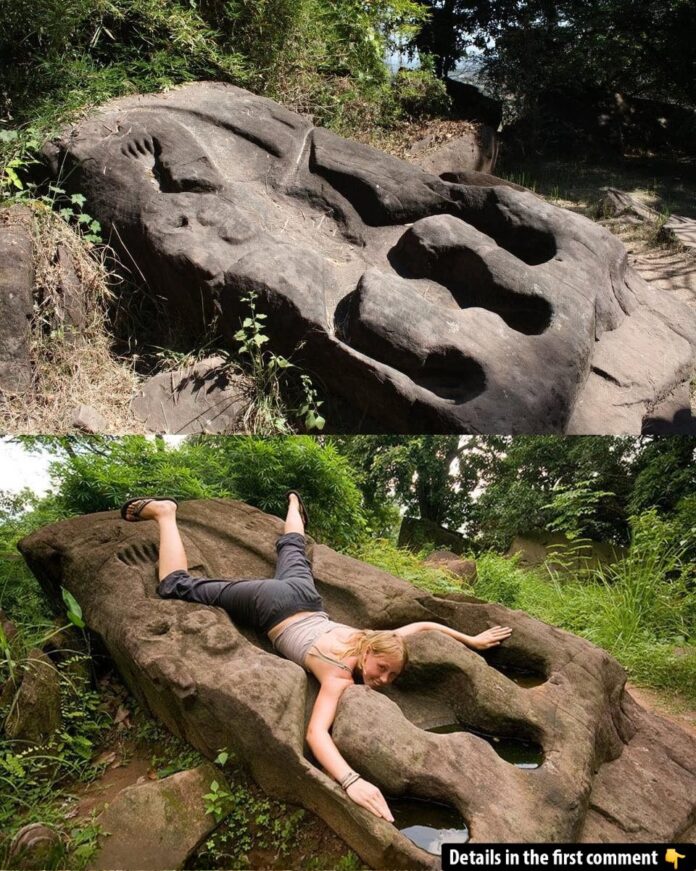Hidden within the ancient Vat Phou Temple complex in Laos lies a peculiar and mysterious artifact—the Crocodile Stone. With its deep impression resembling a crocodile and a cavity capable of fitting a human body, this artifact has sparked speculation about its role in ancient rituals, including human sacrifices. Although steeped in local legend and historical whispers, the true purpose of the Crocodile Stone remains a mystery, shrouded in the spiritual and architectural grandeur of Vat Phou.
The Sacred Vat Phou Temple Complex
Vat Phou, a UNESCO World Heritage Site, is a sprawling temple complex located in Champasak Province, Laos. Built at the base of the sacred Phu Kao Mountain, the complex dates back to as early as the 5th century. In ancient times, Phu Kao Mountain, also known as Lingaparvata or “Linga Mountain,” symbolized the Hindu god Shiva and represented Mount Meru, the center of the cosmos in Hindu cosmology.
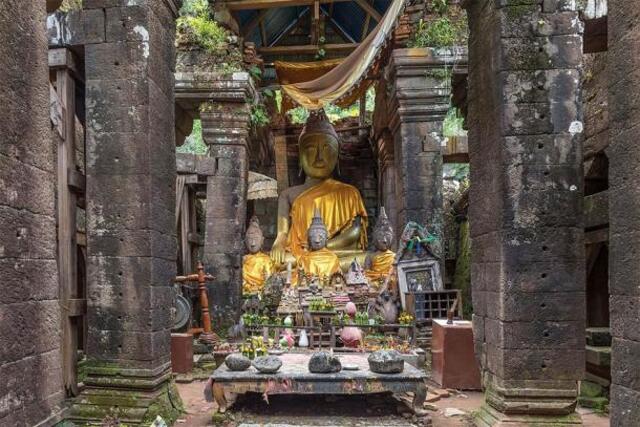
The Khmer Empire later transformed Vat Phou into a masterpiece of religious architecture between the 11th and 13th centuries. The complex features a series of terraces aligned along an east-west axis, stretching from the Mekong River to the mountain’s summit. This alignment reflected the spiritual beliefs of the time, with structures like barays (water reservoirs) symbolizing cosmic oceans and processional roads leading worshippers toward the sacred mountain.
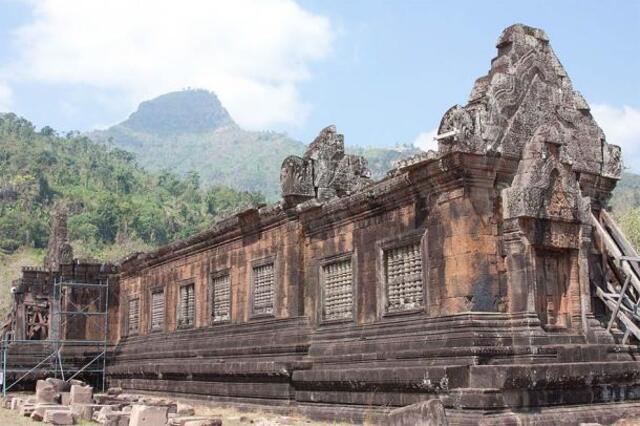
Video
Explore Vat Phu Champasak, a stunning Khmer temple in Laos – watch the video by Peter Ernst to uncover the beauty and history of this ancient site!
Architectural Marvels of Vat Phou
Vat Phou is a testament to the ingenuity and spirituality of ancient Khmer architecture. Visitors begin their journey at the Mekong River, passing through two barays that represented the celestial waters surrounding Mount Meru. From there, a processional road flanked by stone pillars guides visitors toward the terraces.
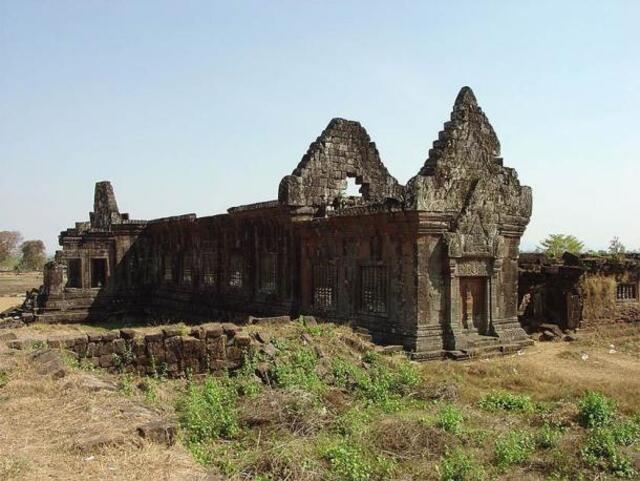
The North and South Palaces, rectangular stone structures flanking a large esplanade, dominate the lower terrace. These palaces, built in the 11th century, were likely used for ritual purposes or as accommodations for monks during ceremonies. Farther along the path lies the Nandi Hall, a structure with unknown significance, which may have marked the end of the Ancient Road.
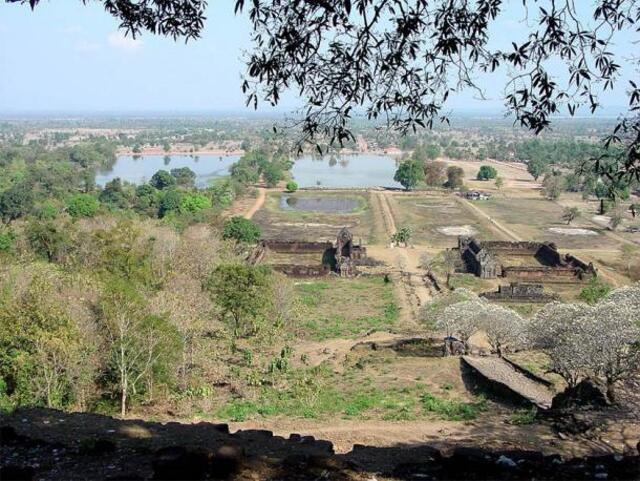
The upper terraces lead to the main sanctuary, perched 75 meters above the barays. Dedicated to Shiva, this sanctuary offered a panoramic view of the complex, the Mekong River, and the surrounding landscape. A spring at the base of a nearby cliff was believed to be sacred and was ingeniously channeled to flow through the sanctuary, purifying the sculpted linga (a symbol of Shiva).
The Crocodile Stone: A Mysterious Relic
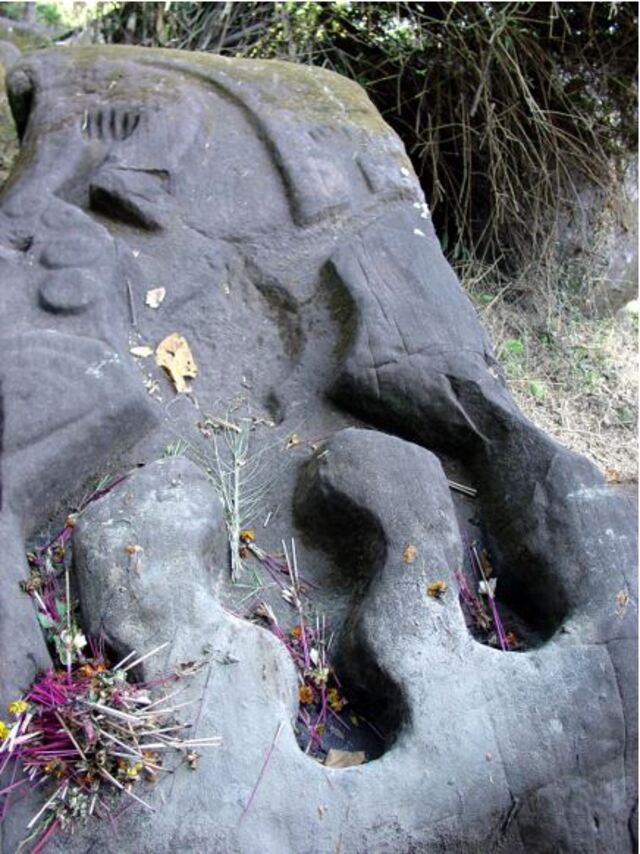
The Crocodile Stone is one of Vat Phou’s most intriguing features. This large boulder, located near the upper terraces, has a deep impression resembling a crocodile. Interestingly, the cavity in the stone is shaped in a way that could easily accommodate a human body, leading to theories that it may have been used as an altar for human sacrifices.
Local legends passed down through generations recount tales of annual rituals involving human sacrifices during the Chenla Kingdom period, which preceded the Khmer Empire. According to these stories, the king of Chenla would pray to the mountain spirits for blessings and protection, offering rice wine and the lives of two young girls chosen for their beauty. These sacrifices were said to take place when the frangipani petals began to fall, marking the beginning of the ritual season.
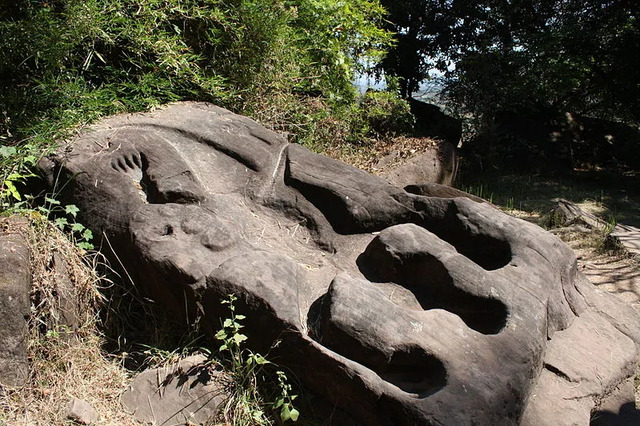
Historical records, such as the Sui Chronicles from 6th-century China, lend some credibility to these legends. The chronicles describe annual human sacrifices in Chenla culture, performed to honor the deity Bhadreshvara, a form of Shiva. However, they mention that these sacrifices took place on the summit of Phu Kao Mountain, rather than at the Crocodile Stone.
Unraveling the Mystery of the Crocodile Stone
Despite the tantalizing legends, the role of the Crocodile Stone in ancient rituals remains speculative. No definitive evidence connects it to human sacrifices. Archaeologists have noted that no similar artifact exists in Laos or Cambodia, raising questions about its uniqueness and purpose.
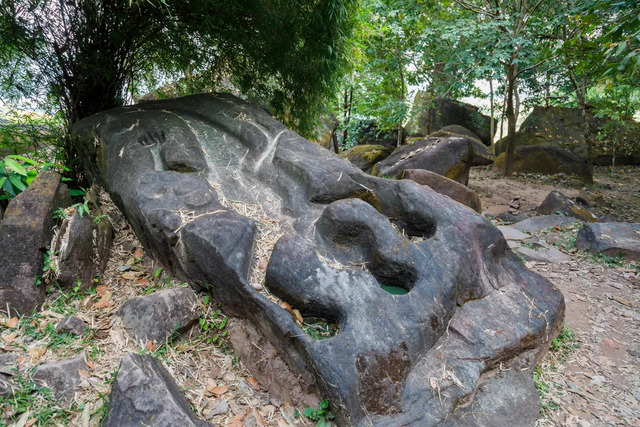
Moreover, crocodiles, while present in the region, did not hold significant religious or symbolic meaning in Chenla or Khmer culture. This further complicates efforts to decipher the stone’s true purpose. Some scholars suggest that the Crocodile Stone may have served as a ceremonial altar or a symbolic structure unrelated to sacrifice.
The absence of direct archaeological evidence has not diminished the stone’s allure. Instead, it continues to captivate visitors and researchers alike, serving as a focal point for exploring the cultural and spiritual complexities of Vat Phou.
Is the Crocodile Stone a grisly artifact of human sacrifice? Watch the video to explore this mysterious relic and uncover its dark historical significance!
The Evolution of Vat Phou
After the decline of the Khmer Empire, Vat Phou transitioned into a Theravada Buddhist site during the 13th century. While its national significance waned, the temple complex remained a vital spiritual center for the local population. The establishment of the Kingdom of Lan Xang in the 14th century further solidified its importance in regional religious practices.
Today, Vat Phou continues to attract visitors, particularly during the annual Vat Phou Festival held in February. This event celebrates the site’s spiritual heritage and draws pilgrims and tourists from across the region.
Challenges in Preservation and Research
Despite its status as a UNESCO World Heritage Site, Vat Phou faces challenges in preservation and research. Only about 5% of the site has been excavated, leaving much of its history hidden beneath the earth. Modern infrastructure projects, such as highways, pose additional threats to the site’s integrity, with reports of ancient temples being disturbed during construction.
The lack of extensive restoration work further hampers efforts to fully understand Vat Phou’s historical and architectural significance. The Crocodile Stone, in particular, remains an enigma, awaiting further investigation to uncover its secrets.
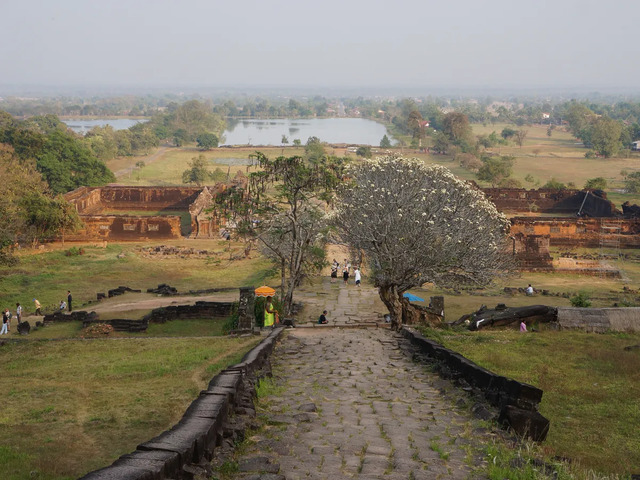
Conclusion
The Crocodile Stone stands as a symbol of Vat Phou’s enduring mystery and cultural significance. Whether it was an altar for human sacrifices, a ceremonial artifact, or something else entirely, its story intertwines with the rich history of the Vat Phou Temple complex and the civilizations that once thrived there.
As researchers continue to explore Vat Phou, the Crocodile Stone remains a testament to the spiritual and architectural ingenuity of ancient Southeast Asia. Its enigmatic presence invites us to ponder the rituals, beliefs, and legacies of those who walked its sacred grounds centuries ago.
